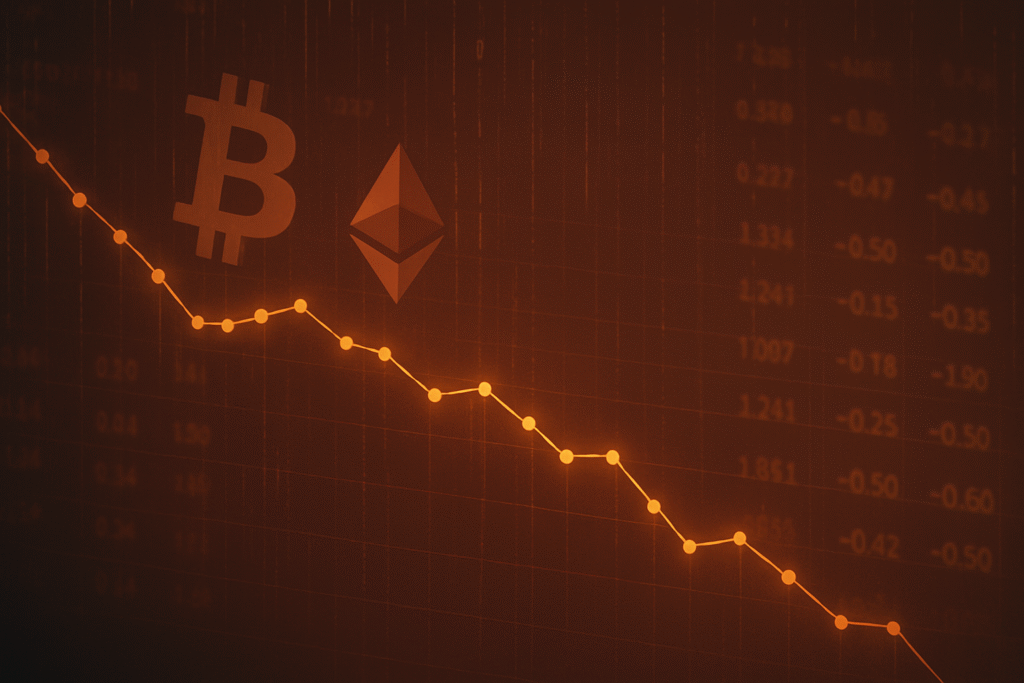Financial News
Crypto Spot Volumes Plunge to $1.67 Trillion in September 2024, Binance’s Dominance Tested Amidst Shifting Market Dynamics

September 2024 marked a significant contraction in the cryptocurrency spot trading landscape, with total volumes across centralized exchanges plummeting to $1.67 trillion. This figure represents the lowest monthly volume recorded since June 2024, signaling a notable cooling in retail trading enthusiasm. The downturn continued a steady decline from a peak of $2.44 trillion observed in March 2024, prompting widespread analysis of the underlying causes and implications for the broader crypto ecosystem.
At the heart of this trend was a substantial reduction in activity on Binance, the world's largest cryptocurrency exchange. Binance's spot trading volume alone dropped by a staggering 22.9% to $344 billion, reaching its lowest point since November 2023. This decline translated into a decrease in Binance's spot market share to 27%, its lowest level since January 2021, indicating a shift in market dynamics and intensified competition. While the immediate market reaction was mixed—Bitcoin (BTC) remarkably defied historical trends with a positive performance—the overall volume contraction underscores evolving investor behavior, with a noticeable pivot towards derivatives and institutional investment products. This shift matters profoundly as it suggests a maturing market where liquidity is increasingly channeled into long-term holdings and leveraged strategies, challenging the traditional dominance of spot trading.
Market Impact and Price Action
Despite the overarching decline in spot trading volumes, September 2024 presented a fascinating divergence in price action for major cryptocurrencies. Bitcoin (BTC) remarkably defied its historical "Redtember" curse, recording a robust 7.3% to 7.4% gain for the month. BTC's price climbed from approximately $57,317.67 at the start of September to close around $63,329.50, even briefly touching $66,000. This unexpected resilience was largely attributed to positive inflation data, a 50-basis-point interest rate cut by the U.S. Federal Reserve, and a resurgence of inflows into spot Bitcoin Exchange-Traded Funds (ETFs), which accumulated over $1 billion in net inflows for the month.
Ethereum (ETH), however, experienced a more modest gain of 2.5% to 3.4%, closing September at around $2,603.06 after starting at $2,427.90. ETH underperformed relative to Bitcoin, with the ETH/BTC pair reaching a three-and-a-half-year low, suggesting a rotational shift in investor preference. The overall market saw a 17% fall in total spot and derivatives turnover across centralized exchanges, reaching $4.34 trillion, a low last seen in June 2024. This volume contraction, while significant, was partially offset by a $3 billion increase in stablecoin market capitalization, reaching $172.5 billion, indicating that capital remained within the ecosystem, awaiting redeployment.
Binance's specific contribution to these trends was profound. The exchange's derivatives trading volume fell by 21% to $1.25 trillion, its worst performance since October 2023, causing its derivatives market share to drop to 40.7%. This, coupled with its spot volume decline, reduced Binance's combined spot and derivatives market share to 36.6%, a level not seen in years. Regulatory pressures are widely cited as a primary factor impacting Binance's market position. In contrast, Crypto.com saw its spot trading volume surge by 40.2% to $134 billion, boosting its market share and highlighting increased competition. Historically, periods of declining trading volume have often preceded broader market corrections; however, September 2024's positive price action for BTC and ETH, despite the volume dip, suggests robust underlying institutional demand and favorable macroeconomic developments differentiating it from past "crypto winters."
Throughout September, Bitcoin found strong support around $56,000 and $52,500, with key resistance at $66,500. The 50-day Exponential Moving Average (EMA) around $57,064 provided a short-term bullish indicator. For Ethereum, critical support was identified at $2,100, with resistance levels around $2,750 to $2,800. ETH's ability to maintain above $2,300 was crucial for bullish continuation.
Community and Ecosystem Response
The crypto community's response to the September 2024 volume decline was a tapestry of mixed sentiments, often reflecting the performance of specific assets rather than a uniform market outlook. On social media, particularly Twitter (NYSE: TWTR), Bitcoin's social sentiment turned "extremely bullish" in the latter half of September. Analysts noted a ratio of 1.8 bullish posts for every bearish post as BTC's price climbed, defying historical September trends. This positive sentiment was fueled by Bitcoin's strong performance, the success of spot Bitcoin ETFs, and anticipation of further Federal Reserve interest rate cuts. Influencers like Jameson Lopp, Casa's chief security officer, observed a positive shift in mainstream media's narrative around Bitcoin, suggesting that "FUD fails to withstand the test of time."
However, broader discussions on platforms like Reddit (NYSE: RDDT) revealed a more cautious and fearful sentiment, particularly concerning geopolitical tensions, which led some investors to move towards stablecoins as a defensive strategy. Despite this, a "collective belief in the resilience and growth potential of the digital asset space" persisted, especially in light of macroeconomic tailwinds.
Binance's significant market share reduction and volume decline sparked discussions about regulatory impacts and competitive shifts. While Binance maintained its position as the largest exchange, its free trading initiatives for BTC and ETH paired with FDUSD were noted to have influenced trading patterns, potentially masking the full extent of the decline in USDT-denominated volumes. In the NFT space, thought leaders like Luca Schnetzler, CEO of Pudgy Penguins, publicly dismissed the U.S. Securities and Exchange Commission's (SEC) increased scrutiny and actions against NFT projects as "nonsense," arguing against their classification as securities. The broader crypto community was also "galvanized" by the 2024 U.S. Presidential Election, with "optimism" for a more favorable regulatory environment "buzzing" across social media following Donald Trump's perceived pro-crypto stance.
The decline in spot volumes had varied impacts across the wider crypto ecosystem. The NFT market experienced a severe downturn, with total sales plummeting by 47.9% compared to August and an 81% drop from its March 2024 peak. All top NFT-supporting blockchains reported monthly losses, and regulatory scrutiny from the SEC further dampened sentiment. Despite this, blue-chip collections like CryptoPunks showed relative resilience, and Bitcoin-based NFTs (Ordinals) continued to gain traction. In contrast, the Decentralized Finance (DeFi) sector saw a mixed response; while Decentralized Exchange (DEX) volumes decreased, the Total Value Locked (TVL) in DeFi platforms actually increased by about $5 billion, reaching $87 billion in September 2024. This suggests that during market weakness, investors often park funds in stablecoins within DeFi, awaiting re-entry. Notably, the Sui blockchain (SUI) stood out with a 35.63% increase in TVL due to growing interest in its native DeFi applications. The broader Web3 space continued its push for easier access to wallets and applications, with prediction markets like Polymarket on Polygon (MATIC) experiencing significant growth in active traders and transaction volume. The integration of AI agents within Web3 was also highlighted as a growing trend.
What's Next for Crypto
The September 2024 dip in crypto spot volumes, while a short-term blip, sets the stage for a dynamic period ahead, shaped by evolving market structures and a confluence of macroeconomic and technological forces. In the short term, the reduced liquidity could lead to continued volatility, and a selective market where assets like Bitcoin demonstrate resilience while others face headwinds, as seen with Ethereum's Q3 2024 price drop. However, the consistent rise in stablecoin capitalization suggests ample dry powder, indicating investors are strategically positioned for re-entry.
Long-term implications remain robustly bullish, especially for Bitcoin, which is increasingly cementing its role as "digital gold" and a strategic reserve asset for corporate treasuries and institutional investors. The market is showing clear signs of maturation, with traditional finance integration accelerating through ETFs and tokenized real-world assets (RWAs).
Several potential catalysts are poised to drive the next phase of growth. Regulatory advancements, such as Europe's MiCA framework, Singapore's MAS, and anticipated clearer guidelines from the SEC, are crucial for fostering legitimacy and encouraging institutional participation. The U.S. Treasury's exemption of cryptocurrencies from the 15% corporate minimum tax is expected to further incentivize corporate adoption. Continued institutional adoption, evidenced by sustained inflows into spot Bitcoin and Ethereum ETFs and growing interest from firms like MicroStrategy (NASDAQ: MSTR), will be a significant tailwind. Technological advancements, including upcoming Ethereum upgrades like "Pectra," "Fusaka," and "Glamsterdam," alongside the growth of Layer-2 scaling solutions and the integration of AI in Web3, promise enhanced network capabilities and user experience. Macroeconomic factors, such as anticipated global liquidity increases peaking in mid-2026 and further Federal Reserve interest rate cuts, are expected to stimulate market activity, with Bitcoin acting as an inflation hedge amidst geopolitical instability. The 2024 Bitcoin halving event also reinforces scarcity, contributing to anticipated price appreciation.
For projects, the strategic imperative is to focus on fundamental utility, technological innovation, and robust security. Building transparently, delivering on roadmaps, and fostering engaged communities will be paramount. Integrating cutting-edge solutions like Layer-2s, GameFi, Web3 gaming, and AI applications will be vital for competitiveness. Investors, on the other hand, must prioritize due diligence, focusing on tokenomics, team credibility, and long-term vision. Risk management, including limiting exposure and regular portfolio rebalancing, is crucial. Understanding one's investment horizon—whether a long-term "HODLer" or a short-term trader—will dictate strategy. Diversification beyond Bitcoin into altcoins with strong fundamentals, particularly those leveraging AI or involved in RWA tokenization, could offer new growth avenues.
Looking ahead, a cautiously bullish Q4 2025 into 2026 is highly likely, with analysts projecting Bitcoin to reach $130,000-$140,000 by Q4 2025 and potentially $200,000-$250,000 by mid-2026. Ethereum is also predicted to surge, possibly reaching $7,500-$10,000 by the end of 2025 or into 2026. An extended bull run is also likely, fueled by institutional demand and supportive regulations. While increased volatility/sideways markets remain a medium-term possibility, a bearish reversal/deeper correction is considered less likely given the current market sentiment and anticipated tailwinds, though significant ETF outflows or regulatory setbacks could still pose risks.
Bottom Line
The decline in crypto exchange spot volumes to $1.67 trillion in September 2024, the lowest since June, served as a potent reminder of the inherent volatility within the digital asset market. However, a deeper analysis reveals that this period was not merely a setback but a testament to the market's evolving maturity and underlying resilience. For crypto investors and enthusiasts, the key takeaway is the nuanced nature of market movements: while spot trading activity cooled, interest in derivatives surged, and significant capital inflows into institutional products like Bitcoin ETFs underscored a strategic shift rather than a wholesale retreat. The resilience of Bitcoin's price, defying historical September trends, further highlights a robust institutional demand that is increasingly independent of retail spot trading volumes.
The long-term significance of this event lies in its affirmation of crypto's ongoing integration into traditional finance and its technological advancement. The continued success of spot Bitcoin ETFs, coupled with initiatives from financial giants to tokenize Real-World Assets (RWAs), bridges the gap between conventional and digital economies, promising enhanced liquidity and broader accessibility. Ethereum's network upgrades are steadily reducing transaction costs, while innovations like Sui's zkLogin are simplifying user onboarding, critical steps for mass adoption. The regulatory landscape is also clarifying globally, fostering legitimacy and investor confidence, with the enforcement of MiCA in the EU being a prime example. These developments, alongside macroeconomic tailwinds like increasing global liquidity and Bitcoin's appeal as a hedge against inflation, paint a picture of sustained growth.
Ultimately, the September 2024 volume dip appears to be a transient market fluctuation rather than an impediment to crypto adoption. The simultaneous dips in trading volumes and significant strides in integrating crypto into mainstream financial systems—such as PayPal (NASDAQ: PYPL) enabling crypto payments for U.S. merchants and Mastercard (NYSE: MA) expanding its crypto card programs—demonstrate a practical shift towards wider utility. The market's ability to navigate and recover from such periods of volatility reinforces its inherent resilience, which is a crucial factor for long-term confidence and sustained adoption.
Moving forward, several important metrics and events warrant close monitoring. On-chain activity, including Daily Active Addresses (DAAs) and transaction counts, will signal real-world utility. Trading volumes across both Centralized (CEX) and Decentralized (DEX) exchanges will reflect market interest and liquidity. Stablecoin metrics, such as total market capitalization and supply ratio, will provide insights into available liquidity. DeFi Total Value Locked (TVL) will remain a key indicator of ecosystem growth, while institutional flows into Bitcoin and Ethereum ETFs will signal traditional finance's continued engagement. Other crucial indicators include Bitcoin Dominance, Open Interest and Funding Rates in futures markets, developer activity, and mobile wallet users. Important dates and events include the historical Q4 performance for Bitcoin, upcoming Federal Reserve interest rate decisions, ongoing regulatory milestones (e.g., MiCA enforcement, SEC frameworks), FTX reorganization payouts in 2025, major industry conferences throughout 2025, further RWA tokenization developments, the convergence of AI and crypto, and significant political developments regarding crypto regulation.
This article is for informational purposes only and does not constitute financial or investment advice. Cryptocurrency investments carry significant risk.
More News
View More




Recent Quotes
View More
Quotes delayed at least 20 minutes.
By accessing this page, you agree to the Privacy Policy and Terms Of Service.



